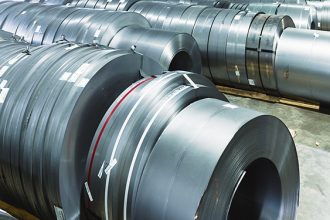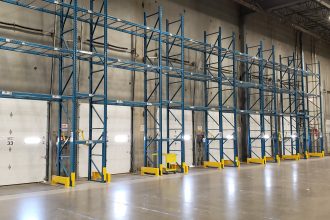Pallet Rack Manufacturing Sustainability Drives Domestic Steel Sourcing Trends
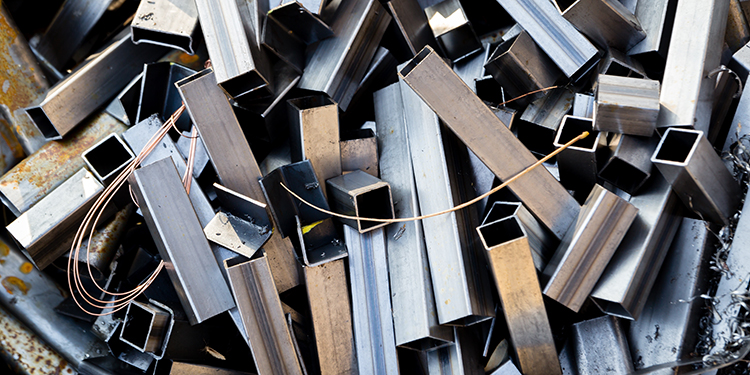
Recognizing that being green is good for the planet and for the bottom line, U.S. manufacturers have increasingly been shifting their practices. This includes many members of the Rack Manufacturers Institute (RMI). Several have implemented pallet rack manufacturing sustainability initiatives to increase the environmental friendliness of their own products and processes.
Domestic Steel Sourcing Supports Pallet Rack Manufacturing Sustainability
Perhaps one of the easiest ways to increase pallet rack manufacturing sustainability is by switching up the content of its primary material: steel. Whether they supply roll-formed or structural pallet rack products, RMI members are increasingly examining their steel sources to ensure greater sustainability in transport, manufacturing, and composition—such as through the incorporation of recycled materials.
Steel is at the top of the sustainable pallet rack checklist for many RMI members, said John Krummell, President and CEO of Advance Storage Products. He noted that many rack manufacturers are increasingly looking to source material produced in domestic “mini” steel mills. These facilities differ from traditional steel mills that make new steel from iron ore in a blast furnace. Mini steel mills specialize in producing steel from recycled scrap, melting and refining it using electric arc furnace technology.
“The domestic sourcing has two large benefits,” he explained. “It reduces freight cost and the environmental impact of transporting the material long distances overseas, and it also enables us to use nearly 100% scrap steel.” As such, the company is effectively converting old cars, appliances, and other materials into new, sustainable pallet rack systems “with an absolute minimal impact to the environment.”
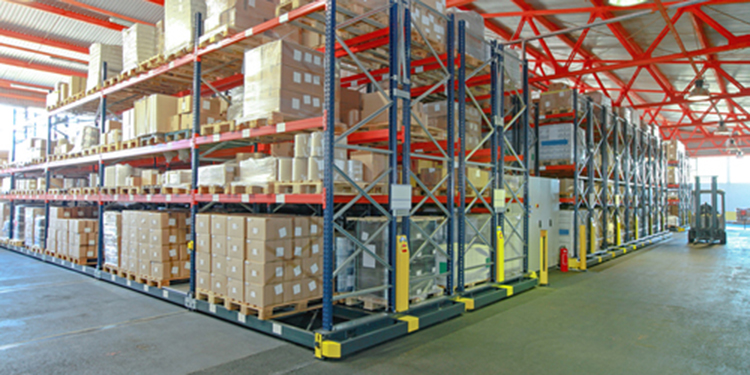
Increased Pallet Rack Manufacturing Sustainability Part of a Growing Trend
The shift in sourcing is part of a growing trend to reshore manufacturing of materials like steel. U.S. iron and steel output saw a high growth rate of 20.5% in 2021, according to research from Atradius Collections. The report projects that growth to continue throughout 2022 by another 5% as robust demand for the materials continued. It also noted that, in addition to the environmental benefits, “some US manufacturers have moved production back home in order to avoid further supply chain disruptions and to improve price stability.”
The trend correlates with interest in sustainability at an all-time high among consumers. They’re increasingly using their purchasing power to support businesses that are committed to protecting the environment. According to research from The Economist Intelligence Unit conducted on behalf of conservation organization WWF, Google searches for sustainable goods has risen 71% globally since 2016. Further, WWF reported another 50% of respondents to a global online survey said they have switched products or services because a company operated in contrast to their values.
Turning Pallet Rack Scrap into New Steel
Further, scrap steel left over from pallet rack makers’ own manufacturing processes can be recycled into new. “Many RMI members have refined their production processes over the years to follow Lean best practices to reduce waste and impact on the environment,” Krummell said. He added that his company’s next sustainability challenge is to reduce non-ferrous shop trash. “It is a harder nut to crack since much of the waste does not have a natural path to recycle.”
Steel Manufacturing Processes Are Going Green
The manufacturing process for steel has also seen significant sustainability improvements in its own energy usage, Krummell added. He pointed to data from the American Iron and Steel Institute (AISI). “The AISI has published a steel production greenhouse gas emissions calculation methodology to help manufacturers be consistent in their reporting, as well as transparent in their efforts to be good stewards of the Earth,” he said.
Indeed, there has been significant progress made in greening the manufacture of steel. AISI notes that: “Producing a ton of steel today in the U.S. requires less than half the energy needed to produce a ton of steel 40 years ago, resulting in a 50% reduction in greenhouse gas emissions.” The association attributes that sustainability uptick to a high percentage of steel made in recycling scrap in mini mills. It also points to use of more domestically sourced iron ore pellets, and greater use of natural gas—instead of coal and coke—as an emission-reducing power source.
Other RMI Members’ Pallet Rack Manufacturing Sustainability Initiatives
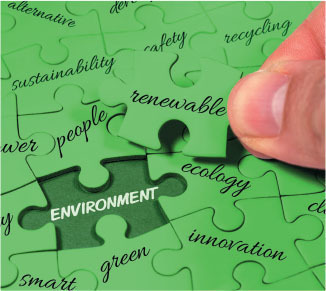 In addition to steel sourcing, there are other ways in which RMI members are pursuing enhanced sustainability across processes and products. These include zero-emissions transport, net-zero carbon reduction, and Environmental, Social, and Governance (ESG) initiatives focused on organizational health, workforce satisfaction, and safety policies. A recent article in MHI Solutions magazine, “Environmental Aspects of Sustainability Are Just Part of the Picture for RMI Members,” offers more details on these differing approaches.
In addition to steel sourcing, there are other ways in which RMI members are pursuing enhanced sustainability across processes and products. These include zero-emissions transport, net-zero carbon reduction, and Environmental, Social, and Governance (ESG) initiatives focused on organizational health, workforce satisfaction, and safety policies. A recent article in MHI Solutions magazine, “Environmental Aspects of Sustainability Are Just Part of the Picture for RMI Members,” offers more details on these differing approaches.
For more information on how your pallet rack supplier can help your operation achieve its sustainability goals, reach out to the members of RMI. They supply industrial steel storage racks and related structural systems worldwide and across virtually every major manufacturing and distribution sector. Visit their website at mhi.org/rmi.

